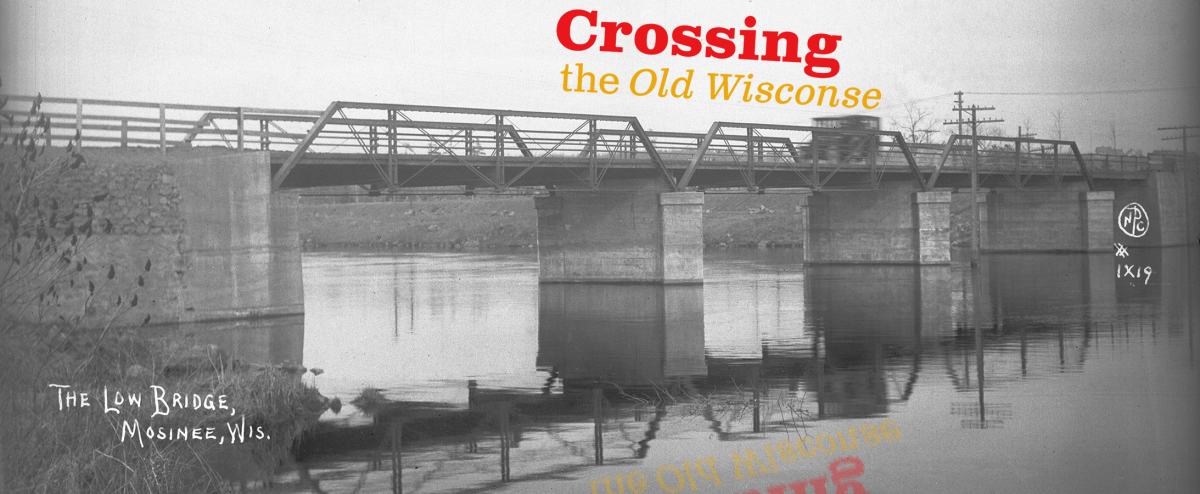Mosinee Bridge

The Mosinee Bridge
In 1854, the new Mosinee post office building moved from the east side of the Wisconsin River to the west side. The first settlers had settled on the eastern side, along the major road that connected Mosinee to the wider world. But the geography of the area limited expansion along the eastern riverbank. By the late 1850s, the growing community would largely build new homes and businesses on the other side of Little Bull Island.
This also meant that even more than other communities along the Wisconsin River Valley which almost exclusively settled on the eastern bank of the Wisconsin River, Mosinee would need a good bridge to cross at the Little Bull Falls. The lumberjacks had long understood the swift rapids and rocky falls of Little Bull Falls made it the most dangerous place on the whole Wisconsin River.
Mosinee’s first real bridges were wooden, held together with a few iron bolts. They were built with latticework-style walls and open at the top. The wooden bridges crossed in sections, first to the island over the eastern “jaws of the gorge,” then crossed over to the western side further down the island.
The "Haunted" Bridge
In 1957, a book was published on the history of Mosinee, to celebrate the community's centennial anniversary. A page of the book was given over to the "history" of the old covered bridge, which purported to tell the story of how the locals were convinced the bridge must be haunted, until a brave visitor informed them he had heard the voice from under the bridge which told him that the future Mosinee had a patron saint and the community's future was secured.
Certainly this is one of the more unique attempts at recounting the history of a bridge, but it should probably not be read as the true account the book presents it as. It's definately possible (even likely) that locals felt uneasy when crossing the bridge at night, and perhaps some believed it to be haunted. But like many good ghost stories, the narrative that a brave visitor calmed their worries by telling them of their "patron saint" under the covered bridge, that should absolutely be read as a metaphor for the history of Mosinee and not as a literal telling of an actual event.
To see the full text of this "haunted" covered bridge is available to read here.
Modern Bridges
Over the years, new bridges crossing the gorge were built to replace the old covered bridge. By the turn of the century, steel truss bridges had replaced the old wood ones. And in the 1930s, Mosinee got a new “super bridge” made of concrete and steel.
The building of the paper factory on the site of the old sawmill led the Village of Mosinee to quickly develop and expand in the first half of the twentieth century. With the greater importance of automobiles and the highways, it became clear that a modern bridge was needed to handle the larger volume of traffic passing through town. The current bridge arrangement, bringing traffic directly across the Wisconsin River, came with a modern bridge built in 1963.
